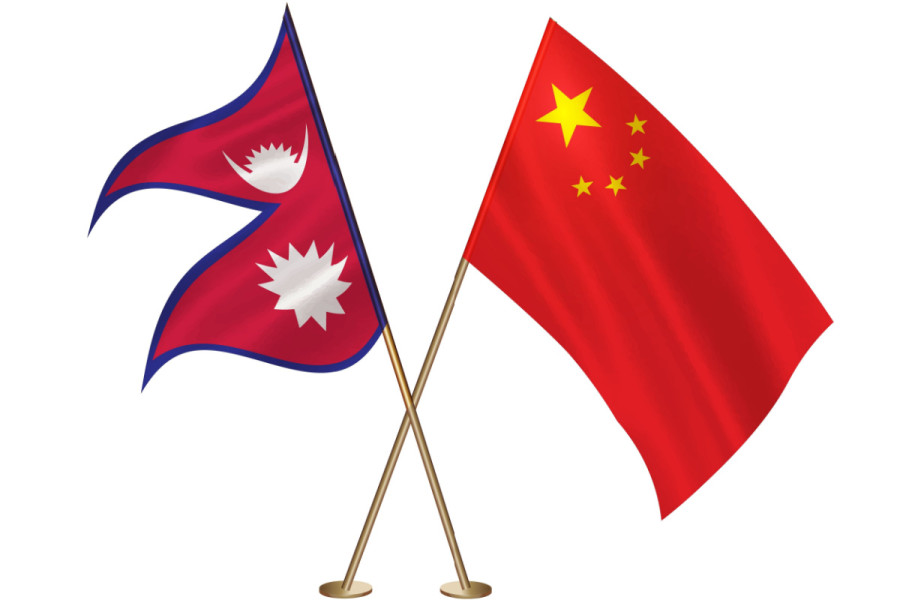Columns
Poor then, poor now
Now is perhaps not the right time to go to China with a begging bowl in hand.
Deepak Thapa
Historically, it must be extremely rare for the poorest country in the world to take on the richest. But apparently that happened when two expansionary powers met head-on in this part of the world two centuries ago in a series of skirmishes that resonate till today. The belligerents were the emerging Gorkha empire and the United Company of Merchants of England Trading to the East Indies, better known as the East India Company. Economist Branko Milanovic pointed out recently that around the time of the Anglo-Gorkha War of 1814-15, the total output of Nepal, which he says was then the world’s poorest, was five times smaller than that of Great Britain, the wealthiest (although he probably meant that in terms of GDP per capita).
A couple of explanatory notes are necessary here. The first obviously is that the East India Company certainly did not equal to Britain itself. Yet can anyone doubt the might of a corporation that boasted a military force two times larger than the national army—especially when it had the backing of the state as well? Second, anyone so inclined should disabuse themselves of the idea that Nepal features in the literature only because it was already a nation-state unlike the scores of other countries yet to come into existence. The database that came up with these estimates takes the unit of analysis to be countries as they are today. In fact, by one reckoning of the same figures, Nepalis were “the poorest people who ever lived” (emphasis added).
Malla-era entrepôt?
A couple of hundred years on, things are quite different. We remain poor and, barring Afghanistan, the regional laggard as well. But no more do we lead the world from the rear. We are also cosily ensconced between the world’s second and fifth largest economies. That happy coincidence, we have been told, will lead to Nepal being pulled along by association. Even more so if we can take advantage of the north-south connectivity we could provide through the numerous highways currently under construction and the rail lines that will hopefully, at some future date, link China and India via Kathmandu. To hear it from the horse’s mouth, in this instance, Baburam Bhattarai: “Nepal with its strategic location in between two big markets of one-third global population, could play a dynamic role as an economic corridor or vibrant economic bridgehead…”
I have not been able to fathom how higher levels of trade between the Ganga plains and the trans-Himalaya will play out in our favour. We surely are not thinking of re-creating the Malla-era entrepôt trading regime that enriched the kingdoms of the Kathmandu Valley. The only value added for us in any enhanced Indo-China trade via Nepal will be the development of a better transport infrastructure—provided our two neighbours are as keen on the idea to fund it. But the use of our roads and tracks is hardly likely to translate into any meaningful benefits for us. Our manufacturing sector could yet take off such that we begin shipping products north and south. That though is proving more and more of a pipe dream with the inexorable decline in foreign investments entering Nepal.
The main hurdle, of course, is how the relations between India and China develop, and recent events have not been encouraging. The unveiling of a new political map of China about a week ago had led to a fair amount of heartburn here and there. The reaffirmation of its commitment to the “nine-dash line” in the South China Sea drew the expected protests from the countries affected. But it must have stung India particularly hard to find the inclusion of both Arunachal Pradesh and Aksai Chin within Chinese territory. For India, the timing would have mattered since it came on the heels of the geniality on display between Narendra Modi and Xi Jinping at the BRICS summit in South Africa and just before the G-20 coming up in India (from which Xi is absenting himself for reasons unknown).
On the other hand, neither India nor China could have foreseen the mini storm that erupted in Nepal. The Chinese government’s mouthpiece that publicised the new map to a global audience claimed it is “based on the drawing method of national boundaries of China and various countries in the world”. Never mind that it appeared to have overlooked the fact that Nepal’s “drawing method” had come up with a different map for the country than the one depicted. Instead of lodging a formal protest with Beijing, however, the reaction from our government was a tepid statement that failed to even mention China and instead just called on others to “respect” the “political and administrative map unanimously approved by the Parliament of Nepal in 2020”. Our politicians have now begun blaming one another for not having earlier communicated the same message to the international community.
One can be quite certain that Nepal did not figure in the imagination of the Chinese cartographers or of their overlords overseeing the contours of the “2023 edition of China’s standard map”. Even if it had, the Chinese would have found it quite awkward to acknowledge Nepal’s 2020 map since it would have meant disowning their position thus far. For in 2015, during Modi’s China visit, the two countries agreed to increase trade through Lipulekh pass. Going further back, the 1954 agreement between India and China on “trade and intercourse” with Tibet had also identified Lipulekh as one of the transit points.
Land swap
India built the road to Lipulekh in the spirit of its 2015 agreement with China, and it was in response that we produced our own map that incorporated Lipulekh within Nepal. It is hence quite understandable why China would quietly ignore Nepal. Even were it otherwise, there would be no point in heeding Nepal’s sensitivities and needlessly antagonising India. The protestations emanating from New Delhi on the Aksai Chin-Arunachal Pradesh matter were half-hearted precisely because it was old hat, and could also have been perceived as a reminder from Beijing that a mutual swap would be advantageous to both.
There is some expectation that Prime Minister Pushpa Kamal Dahal “Prachanda” will raise the map issue during his upcoming visit to China. Going by his recent performance in New Delhi, he is likely to let that pass. Particularly since he has been burdened with a long wish list, some of which he hopes to get the Chinese to acquiesce in.
If Prachanda does manage to pull off anything substantive, it will be quite a feat since there has not been much tangible movement from the Chinese side for years. The Rs65 billion in aid declared by Xi in 2019 is yet to materialise, and despite the passage of six years neither has the Belt and Road Initiative implementation plan. Part of that could be because the extended Covid-19 lockdowns paralysed the Chinese economy and the expected recovery has not gone as planned. Now is perhaps not the right time to land in Beijing with a begging bowl. One can only hope neighbourly largesse will prevail, whether for reasons strategic or charitable.




 6.73°C Kathmandu
6.73°C Kathmandu















